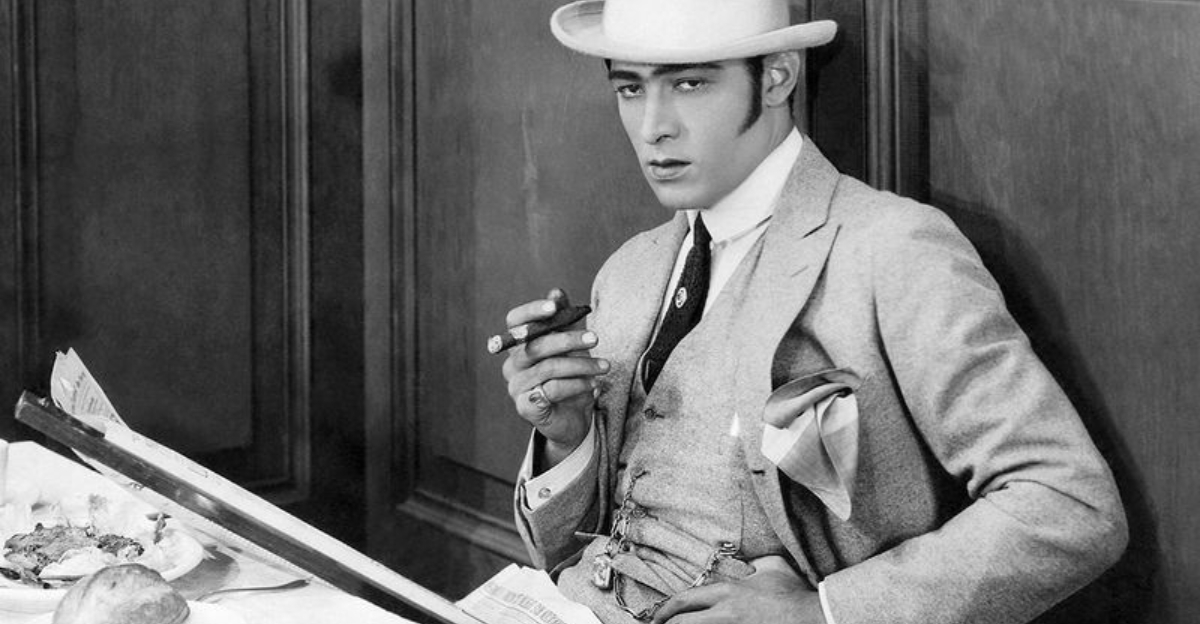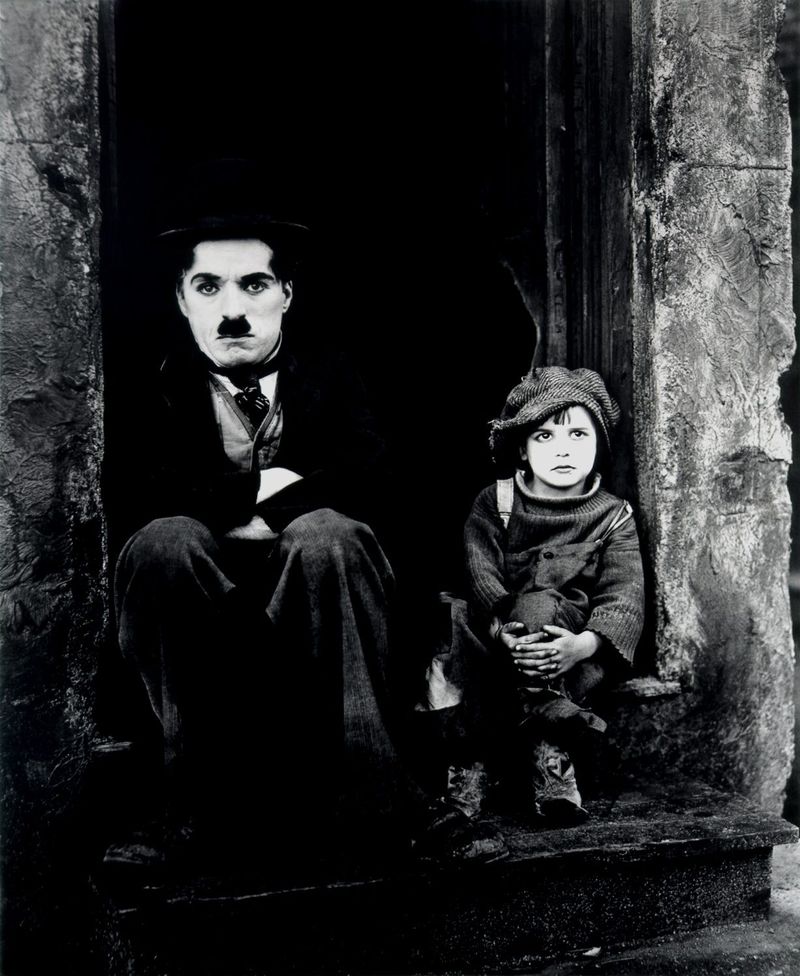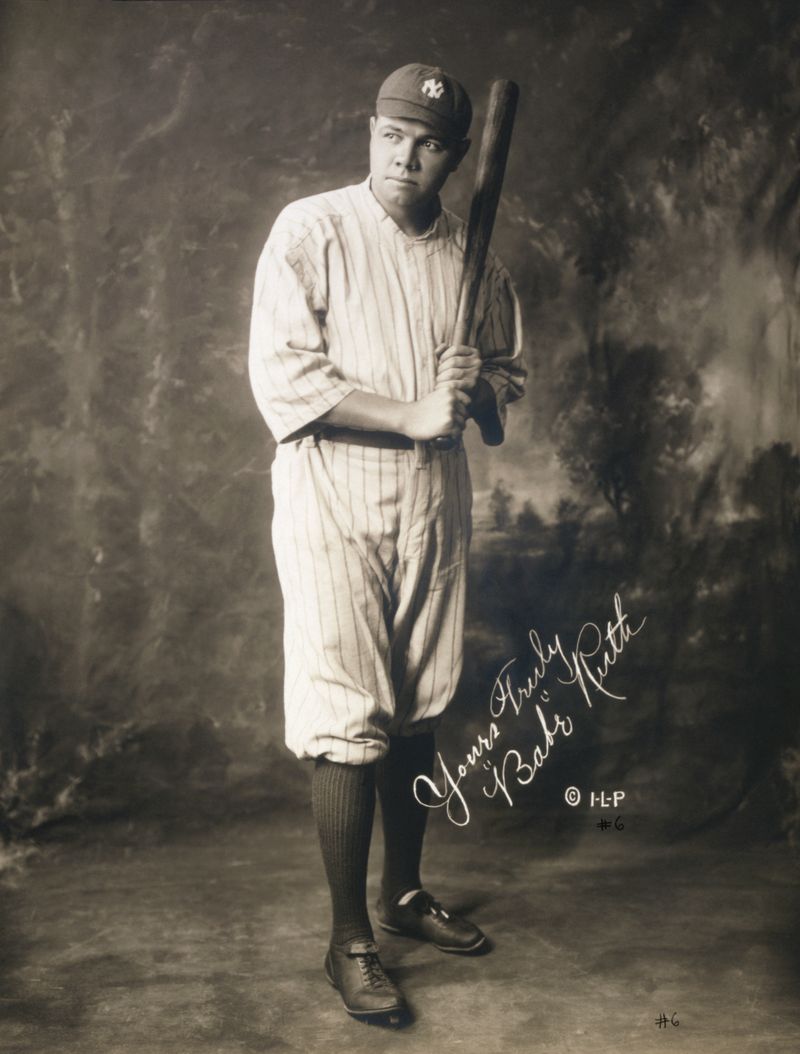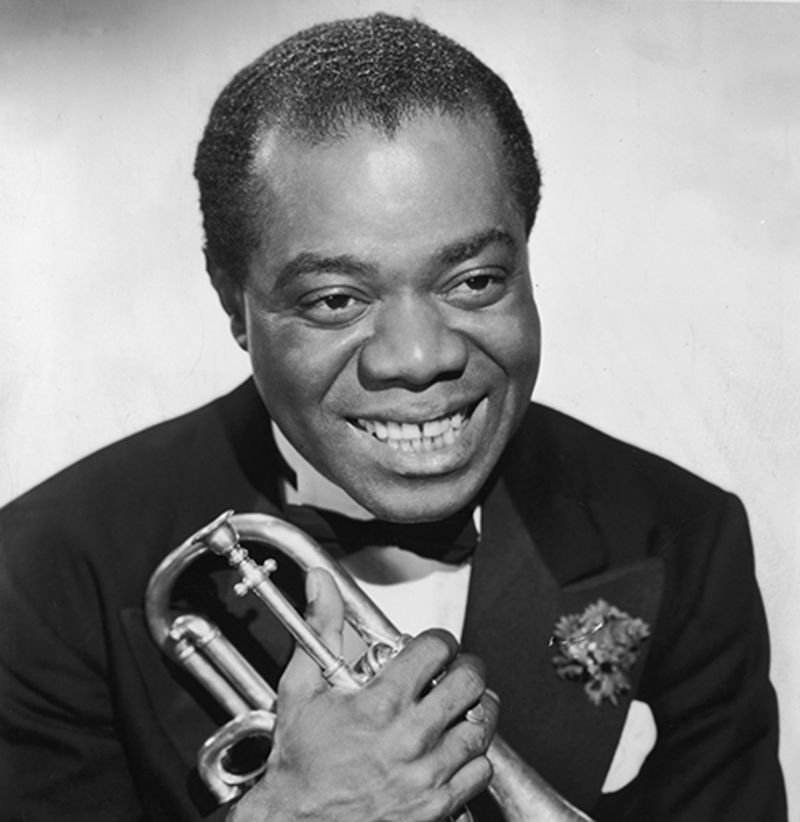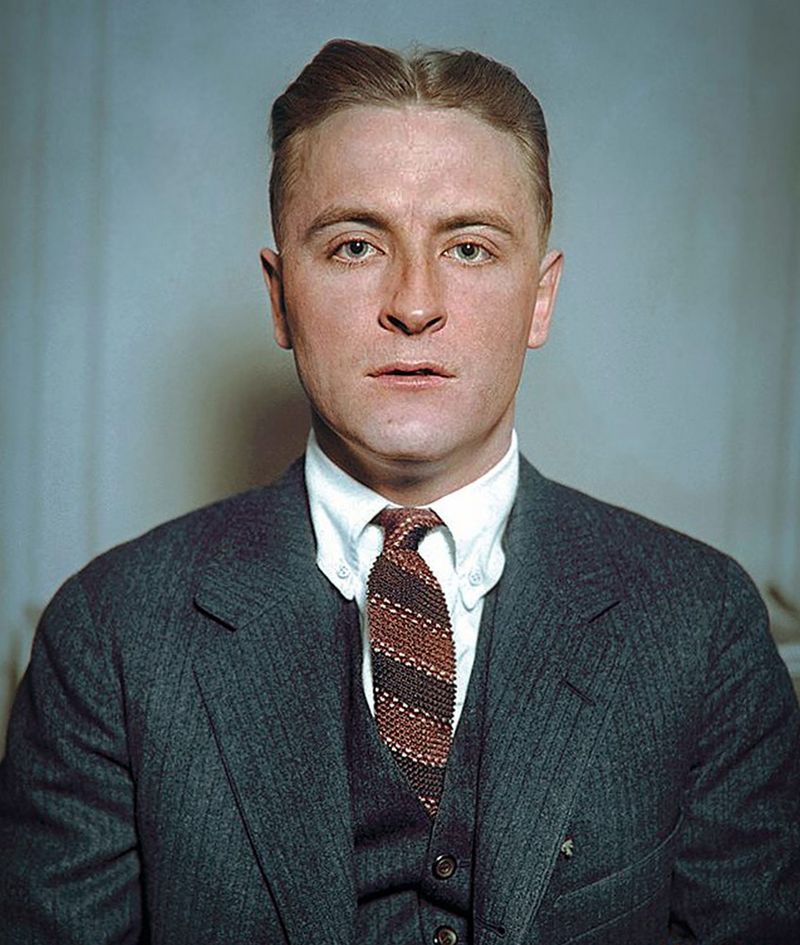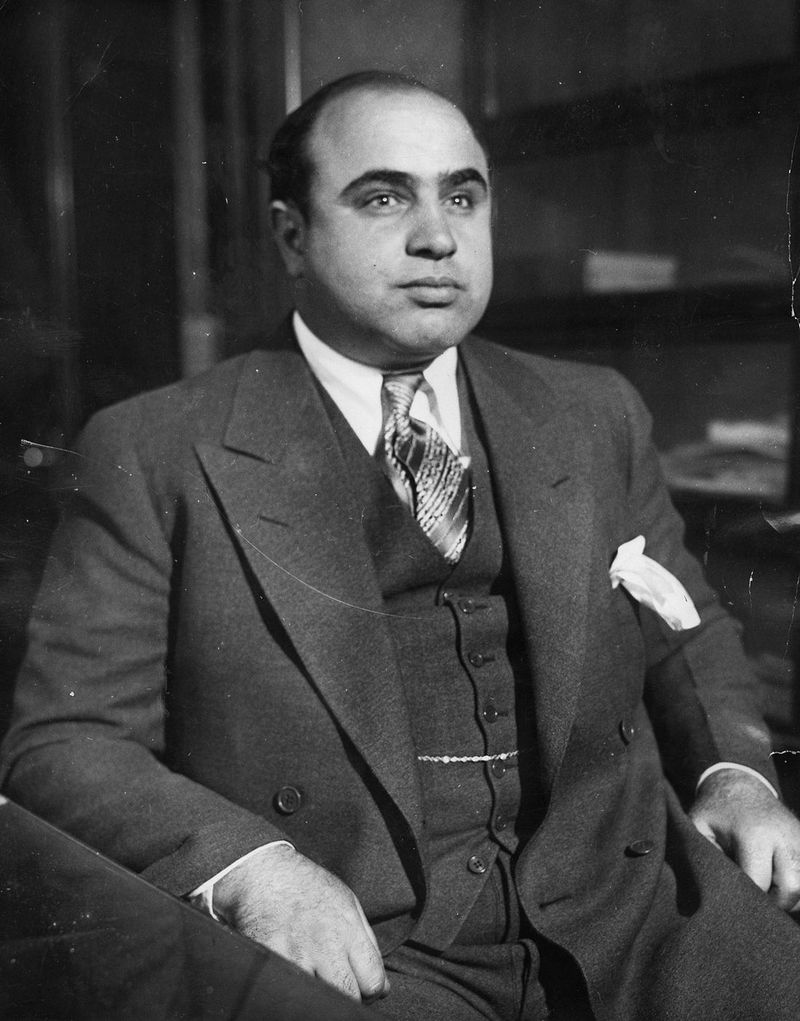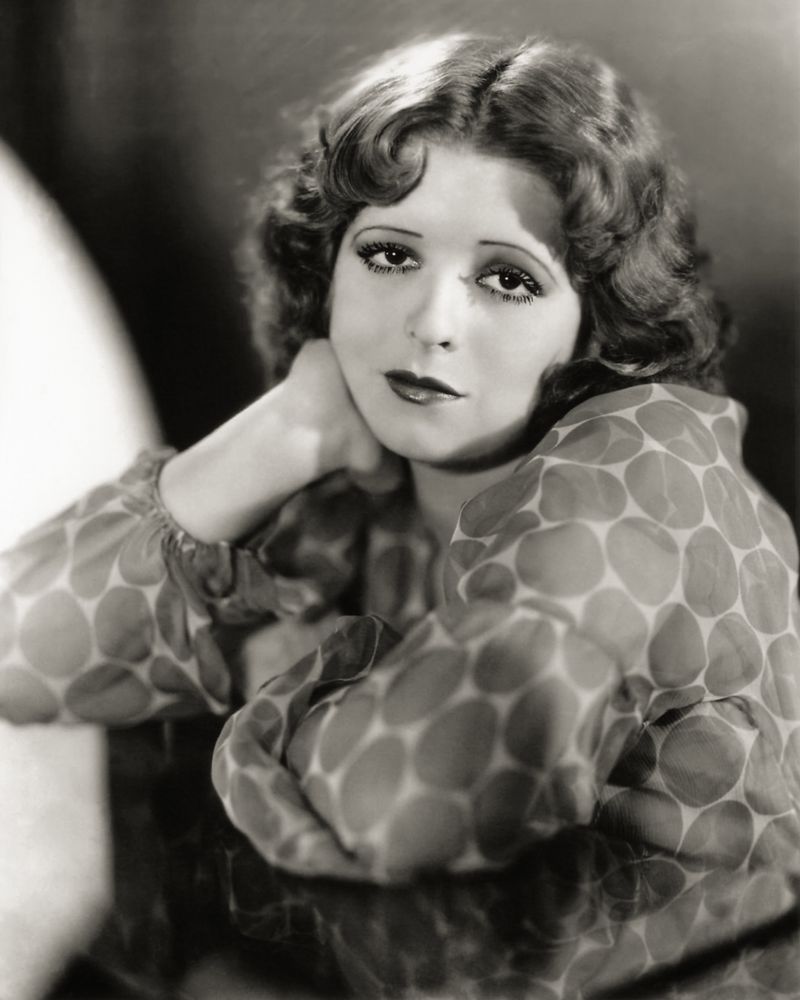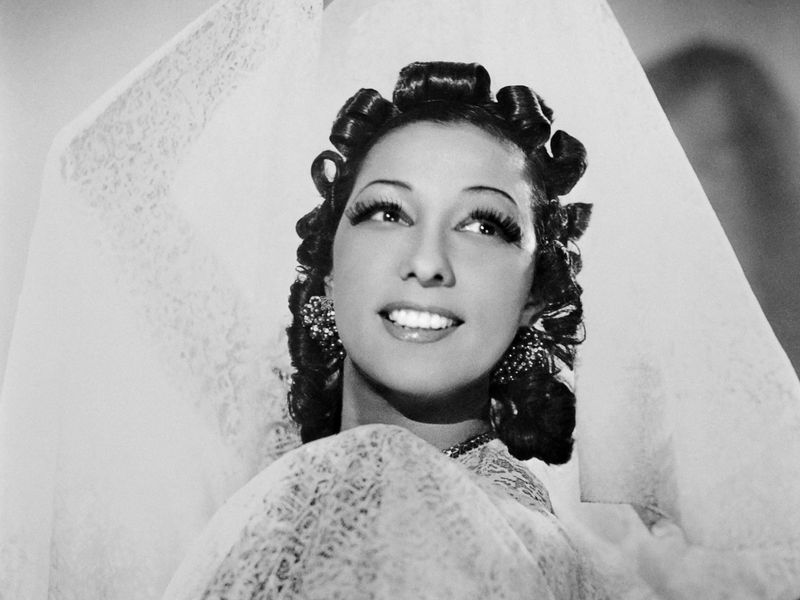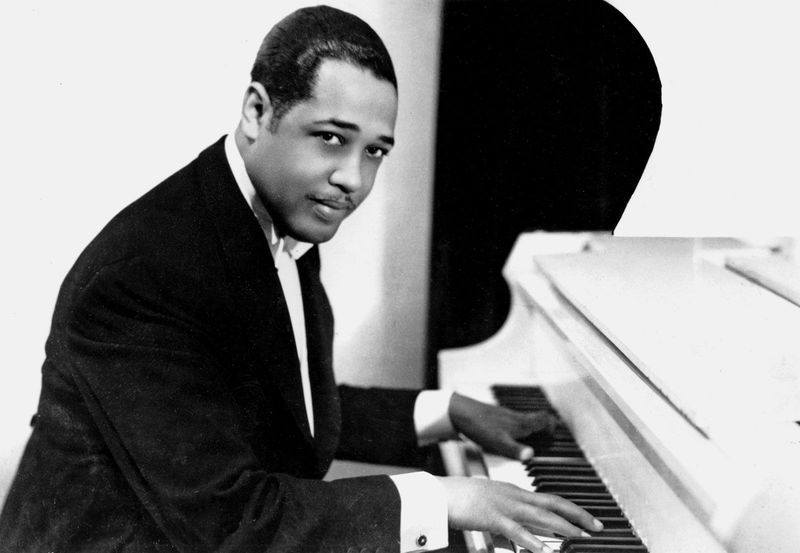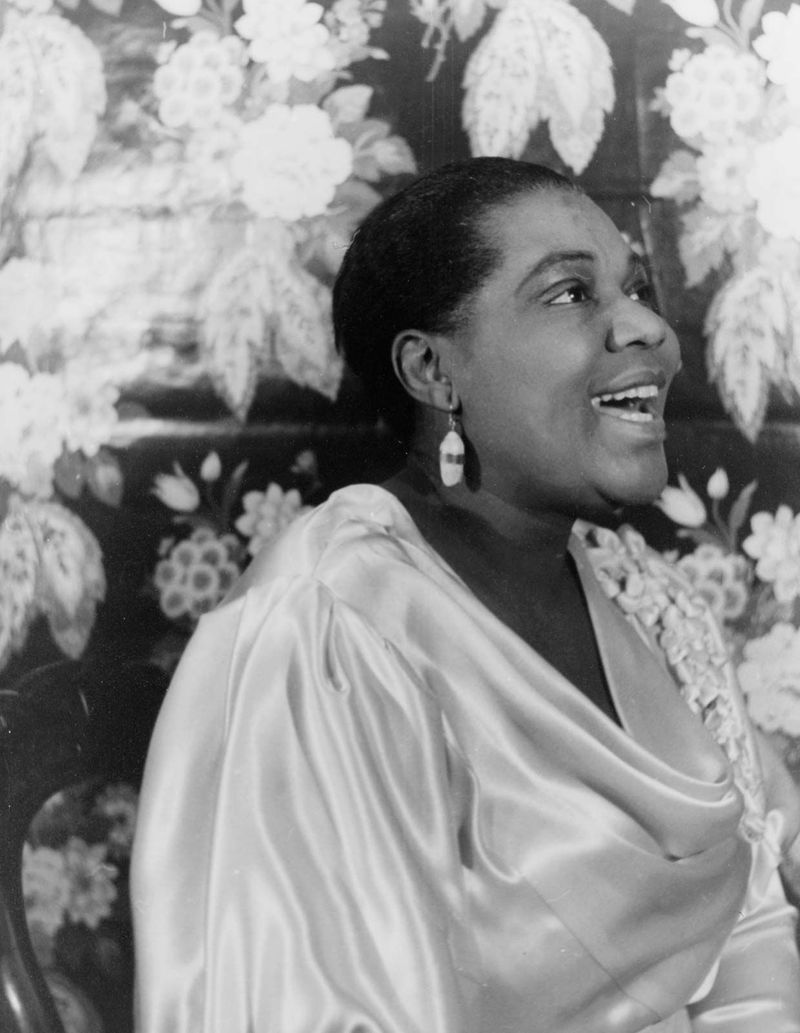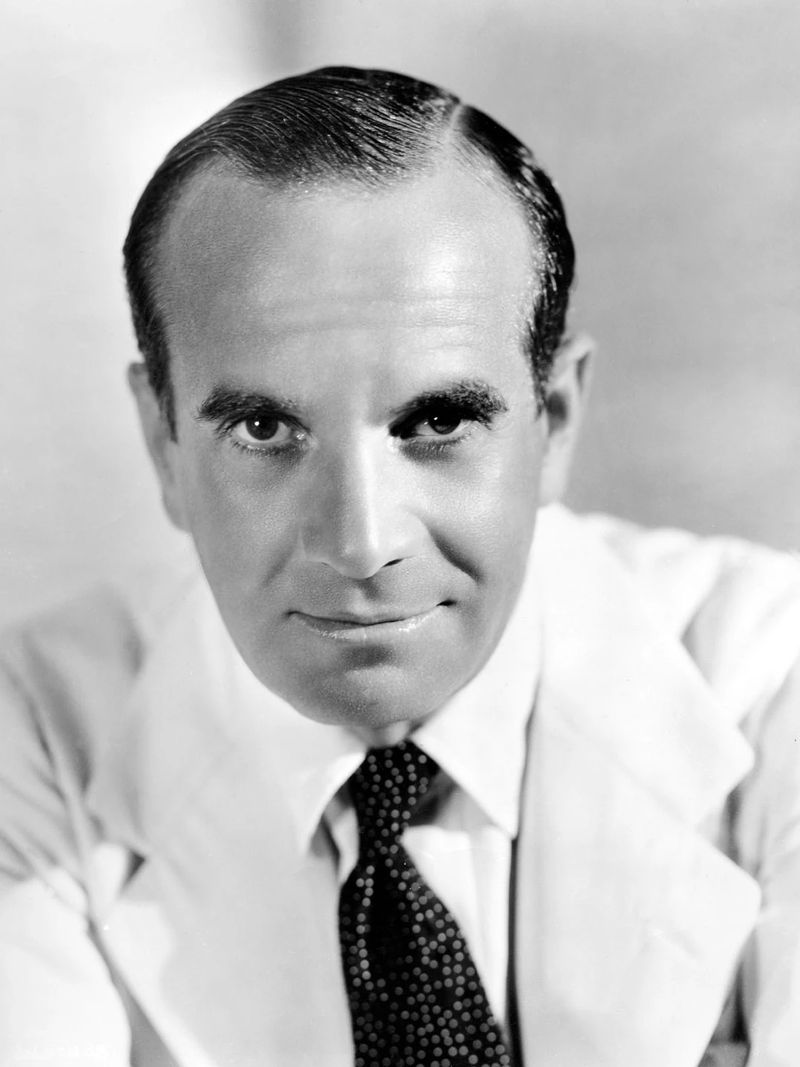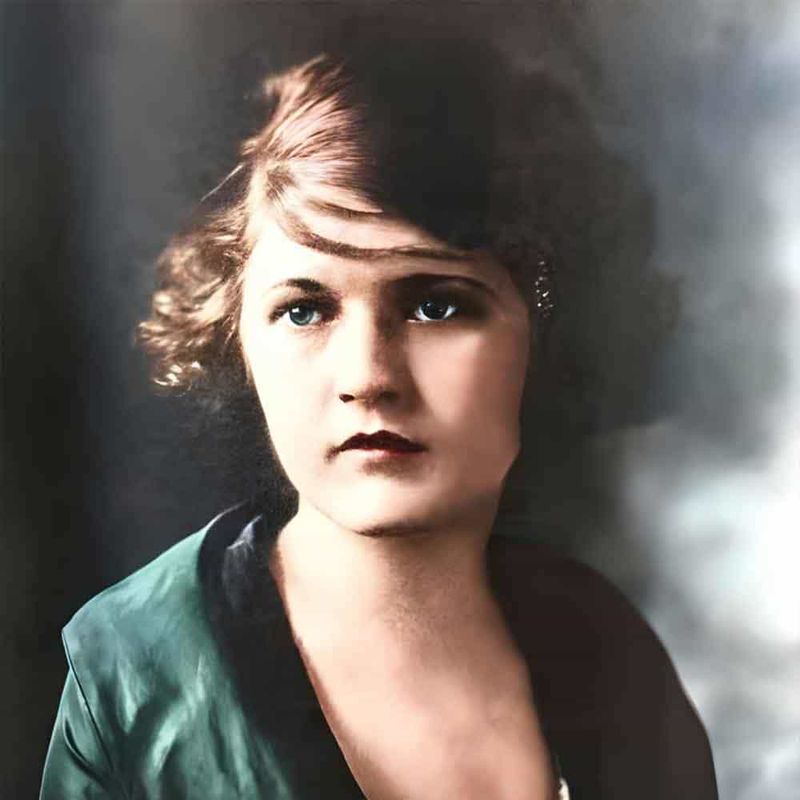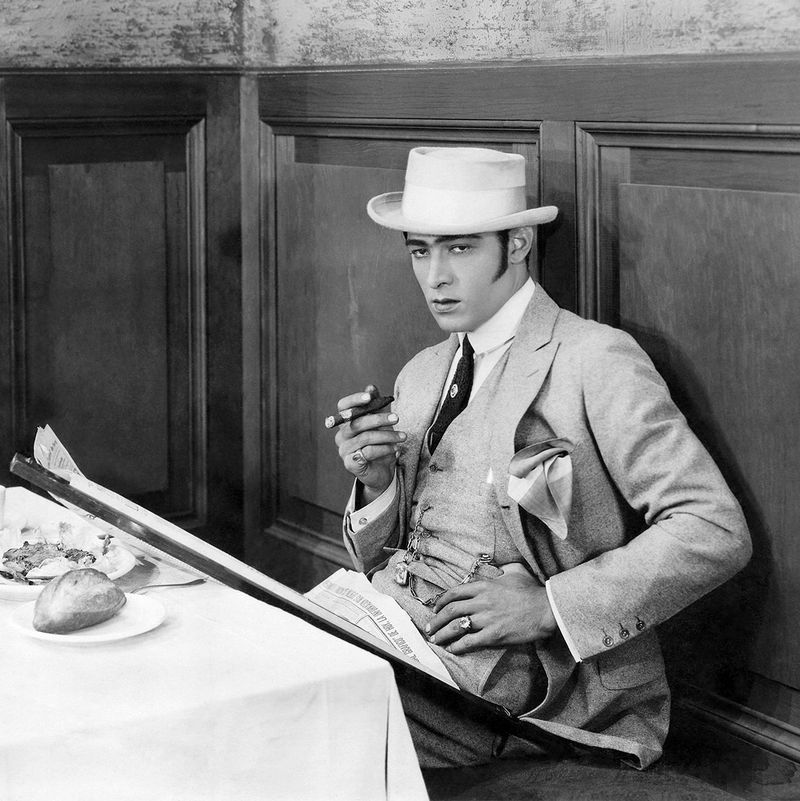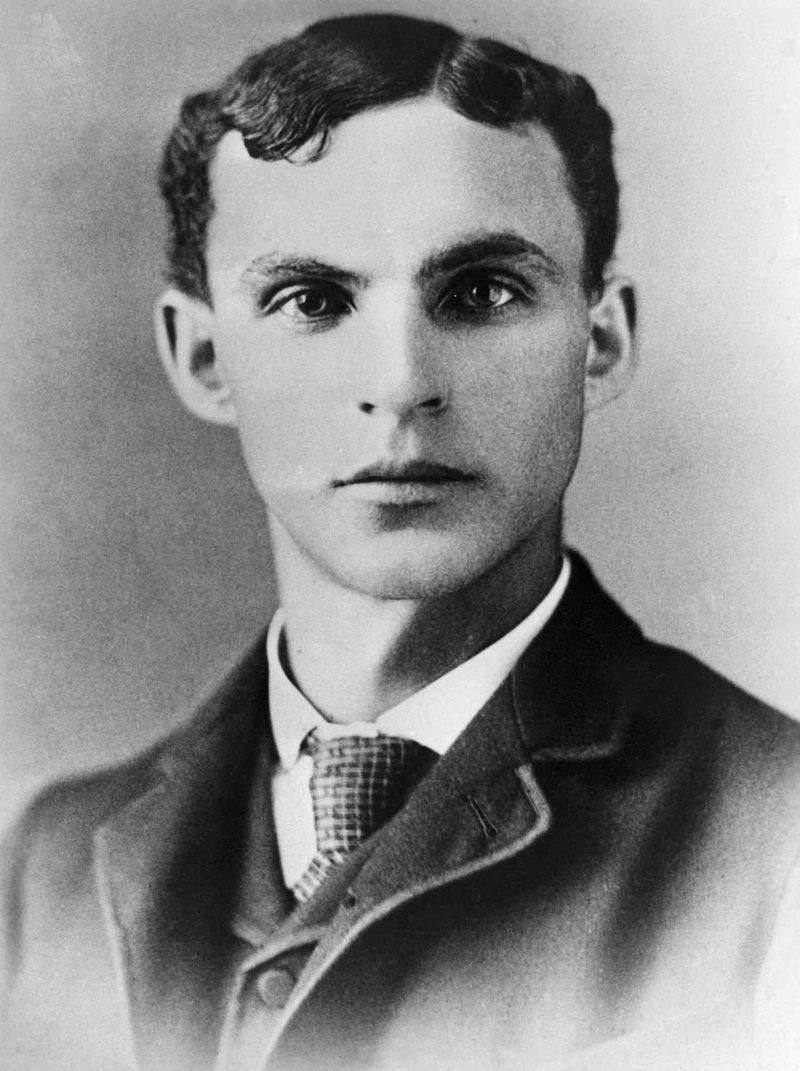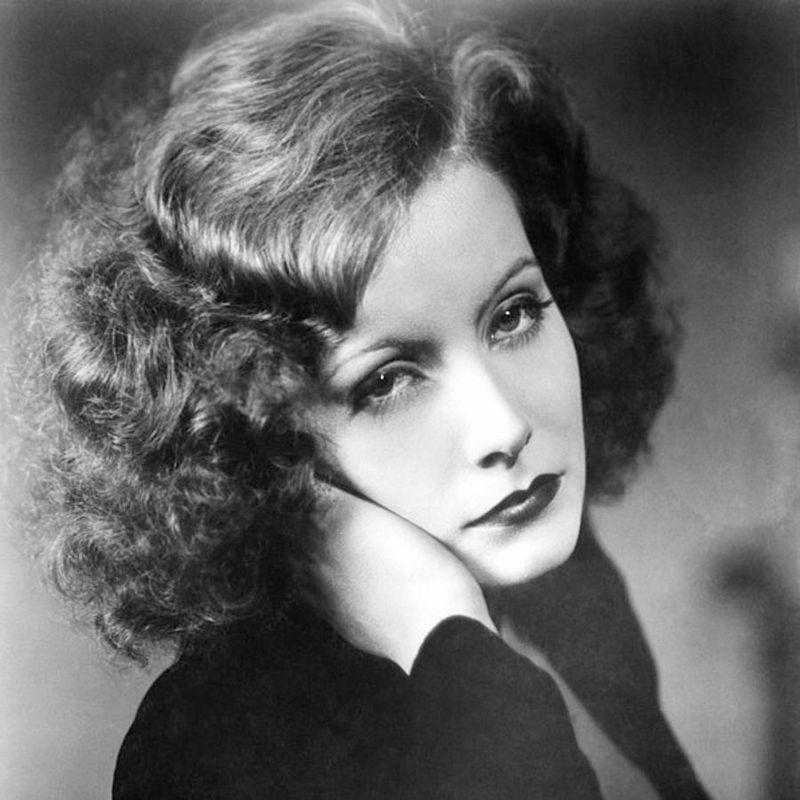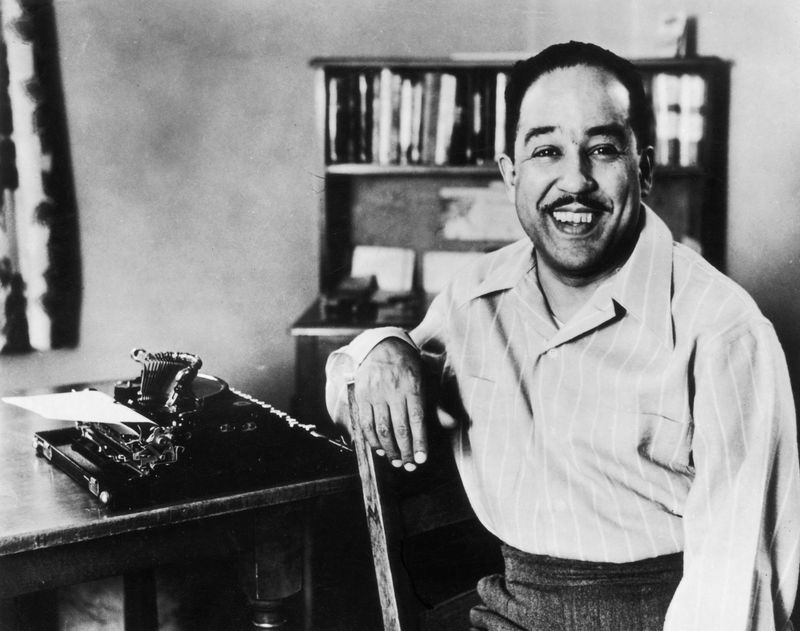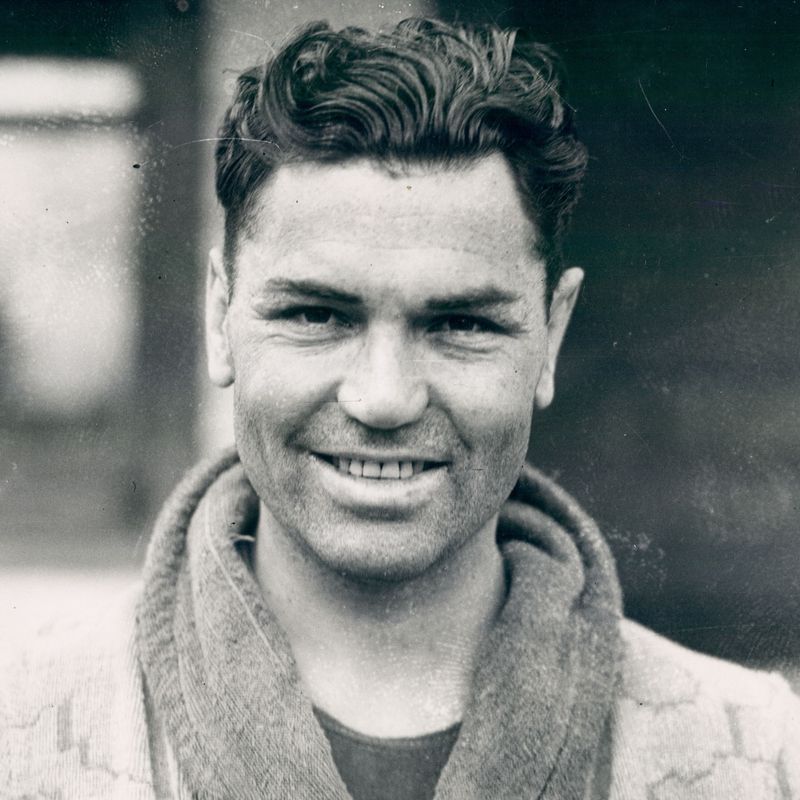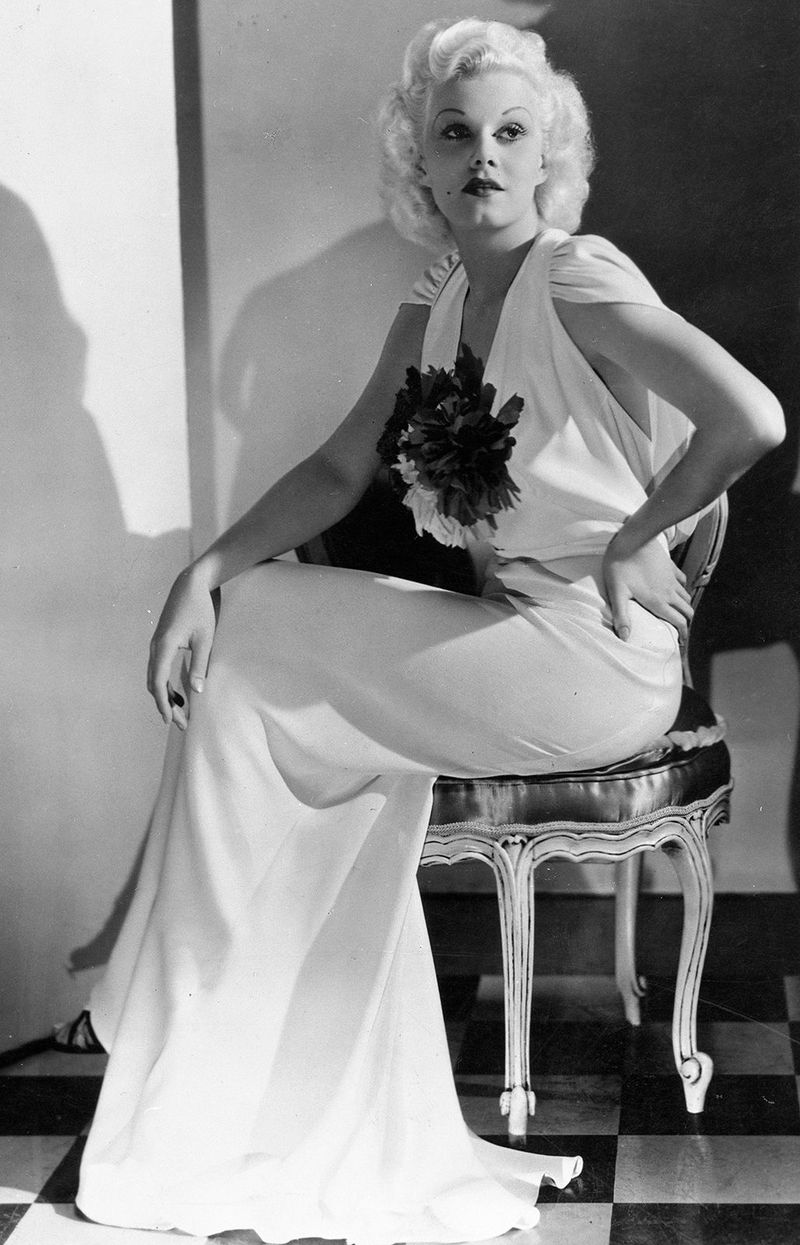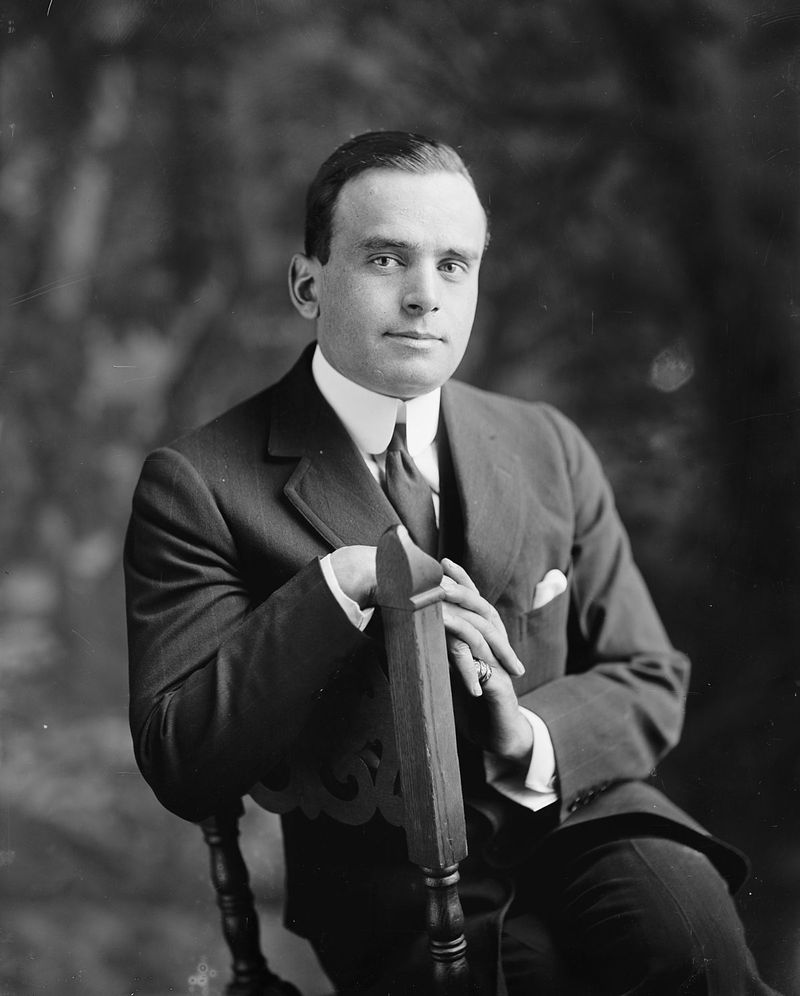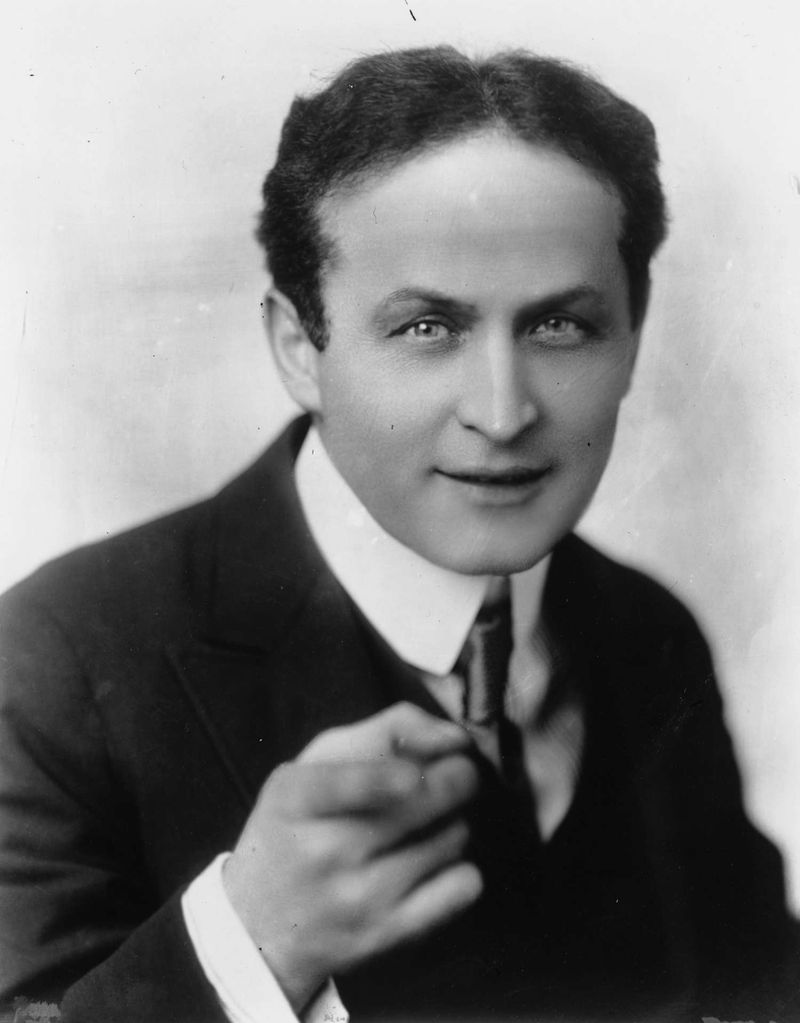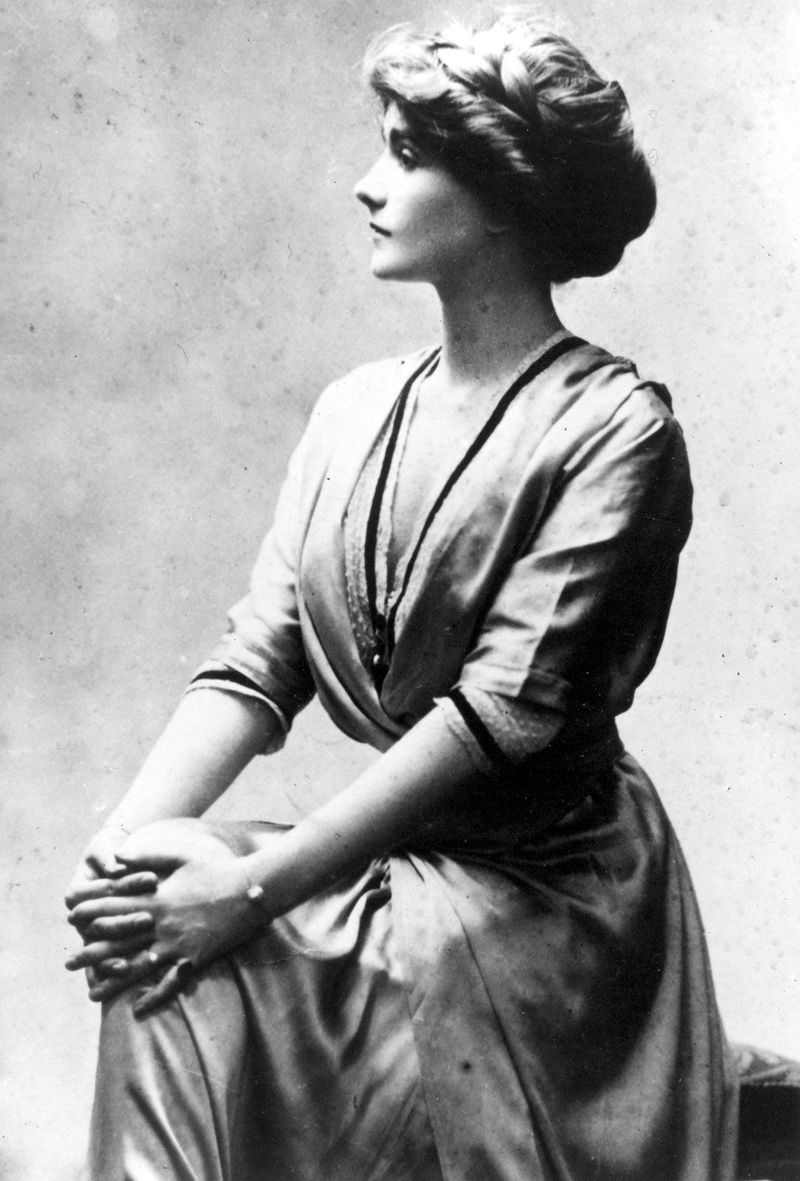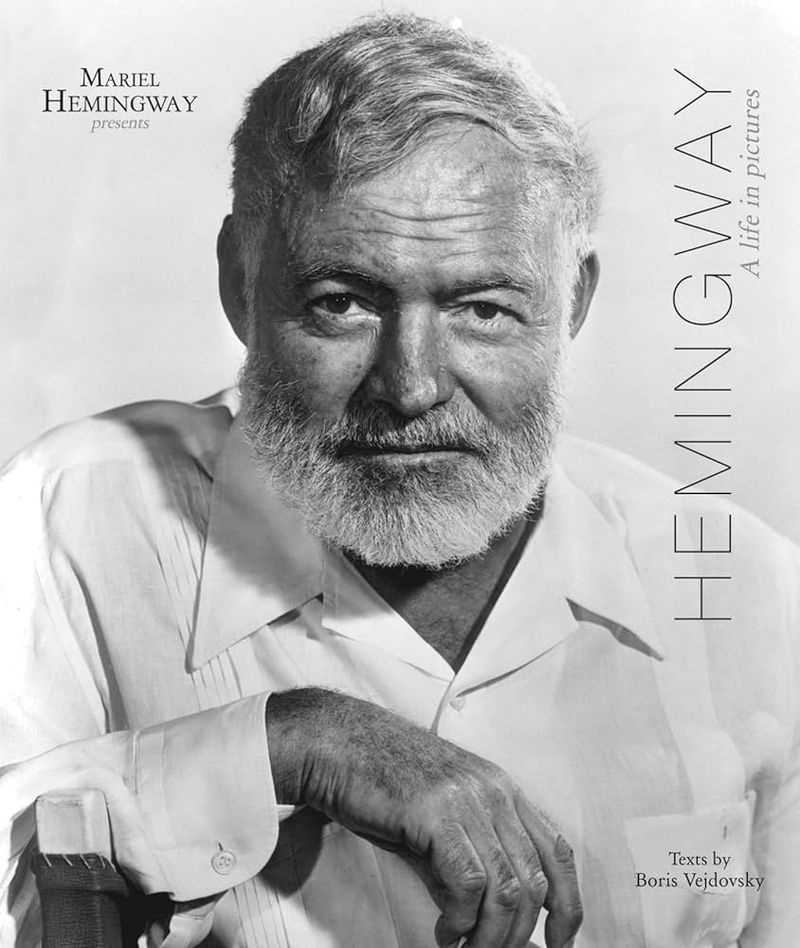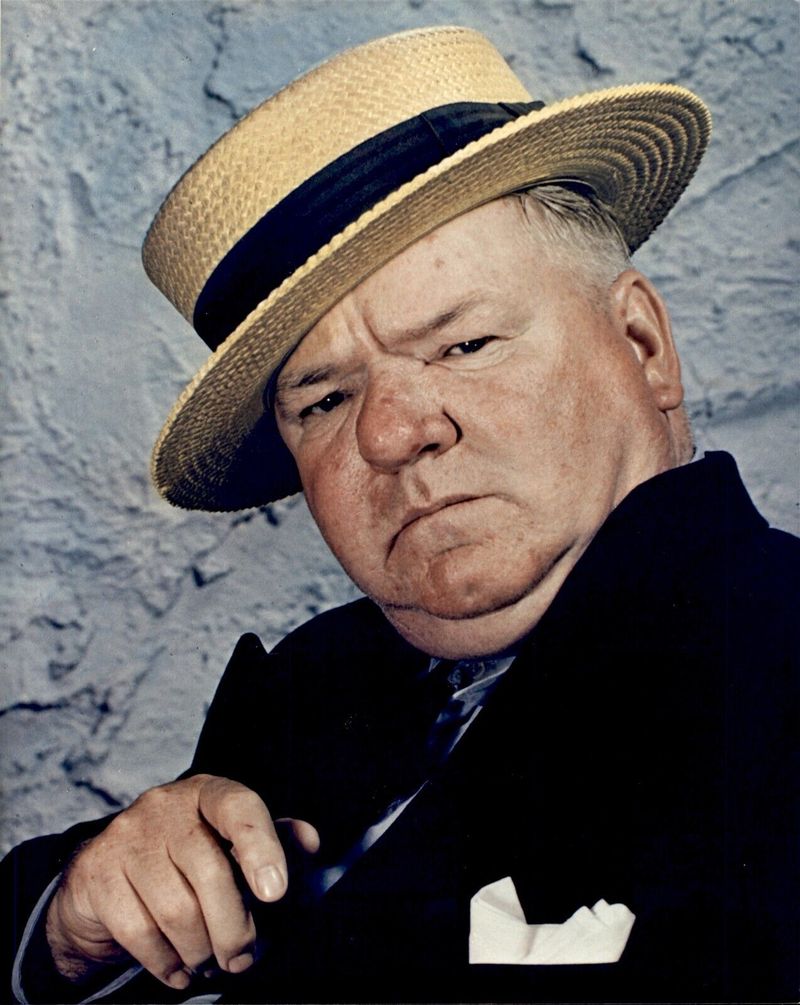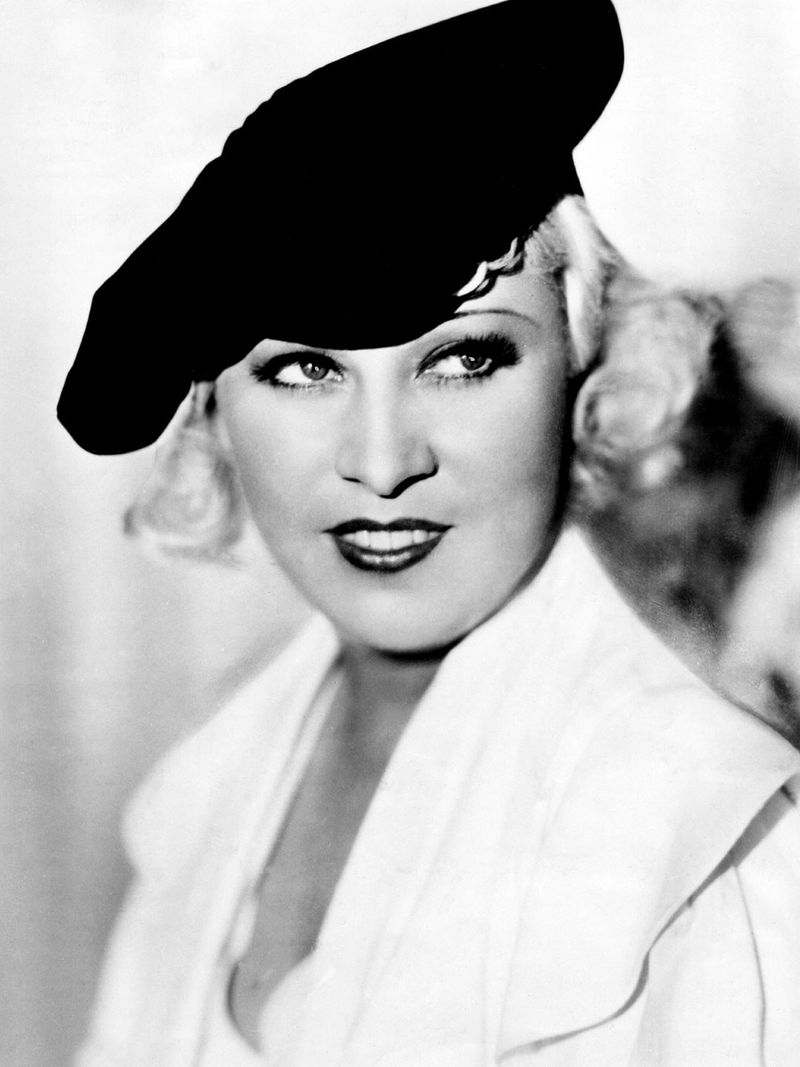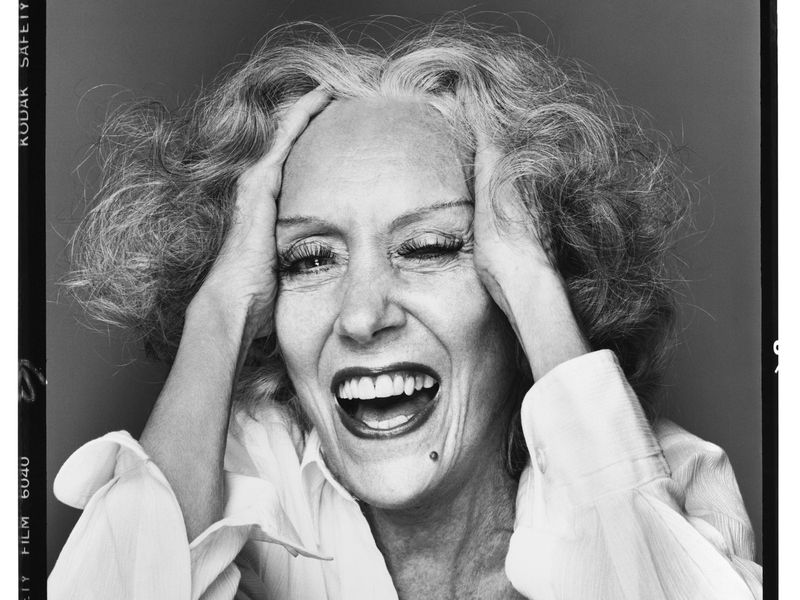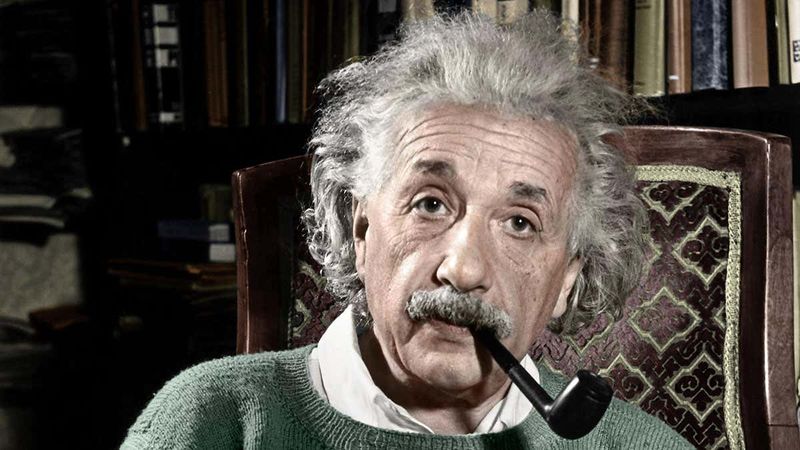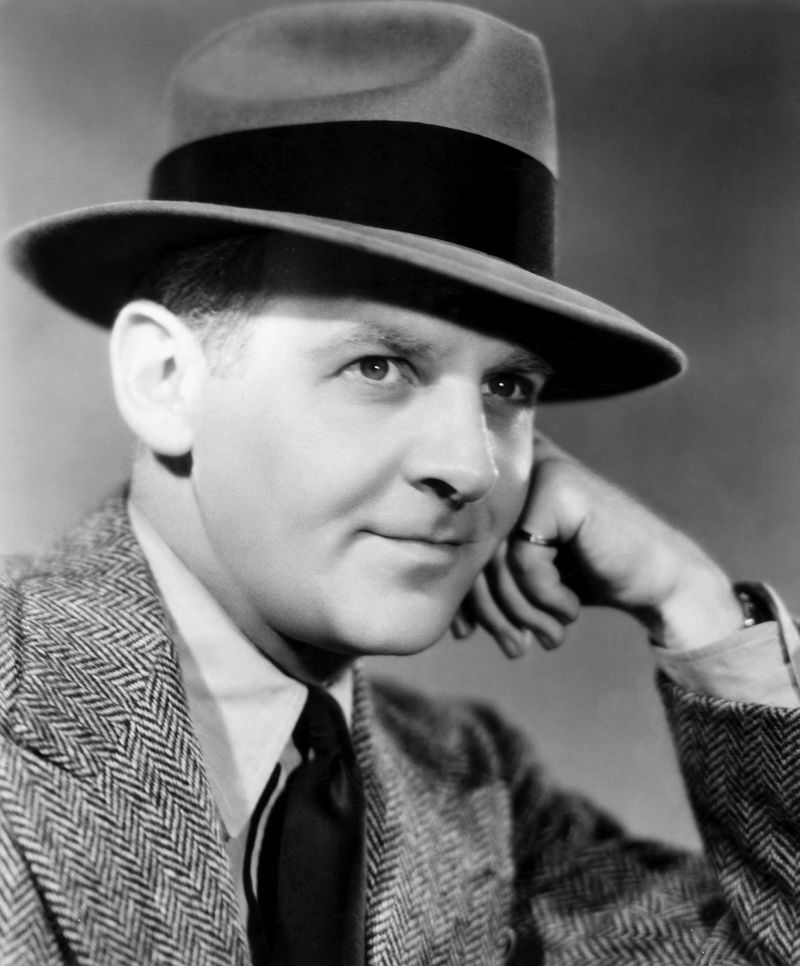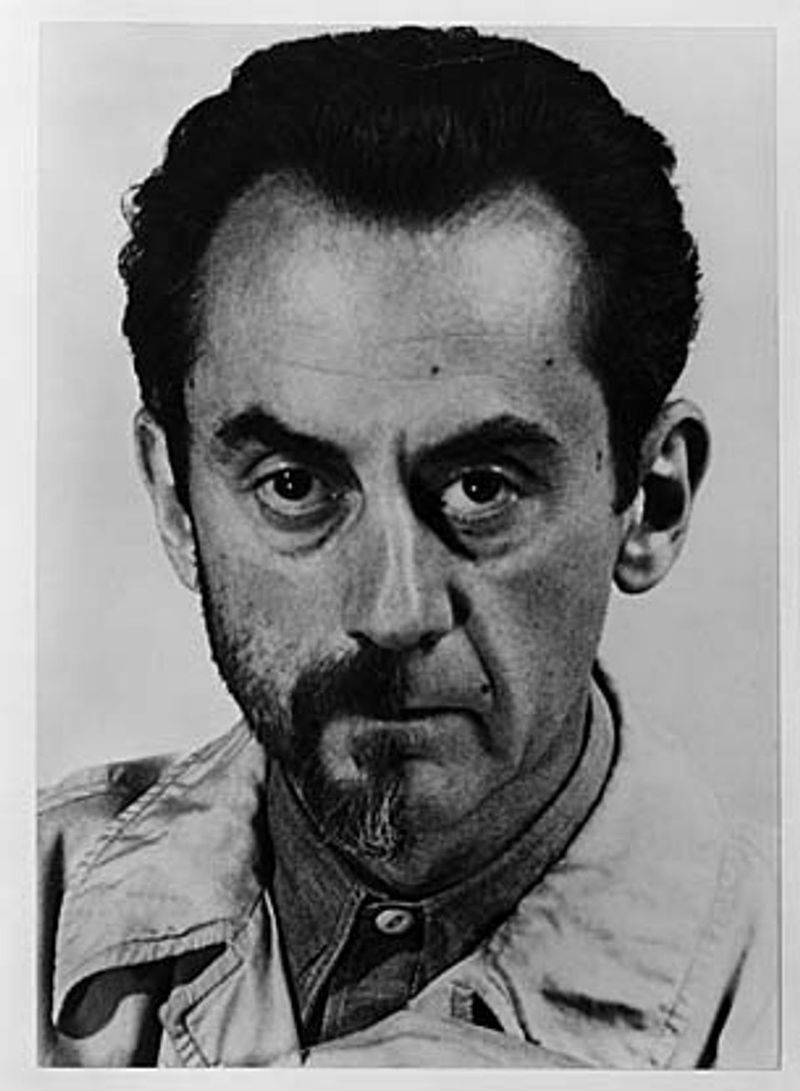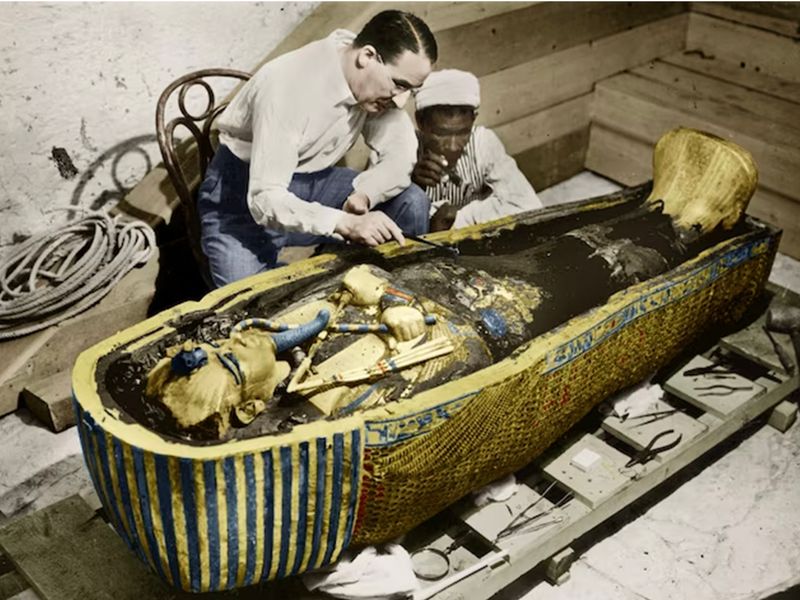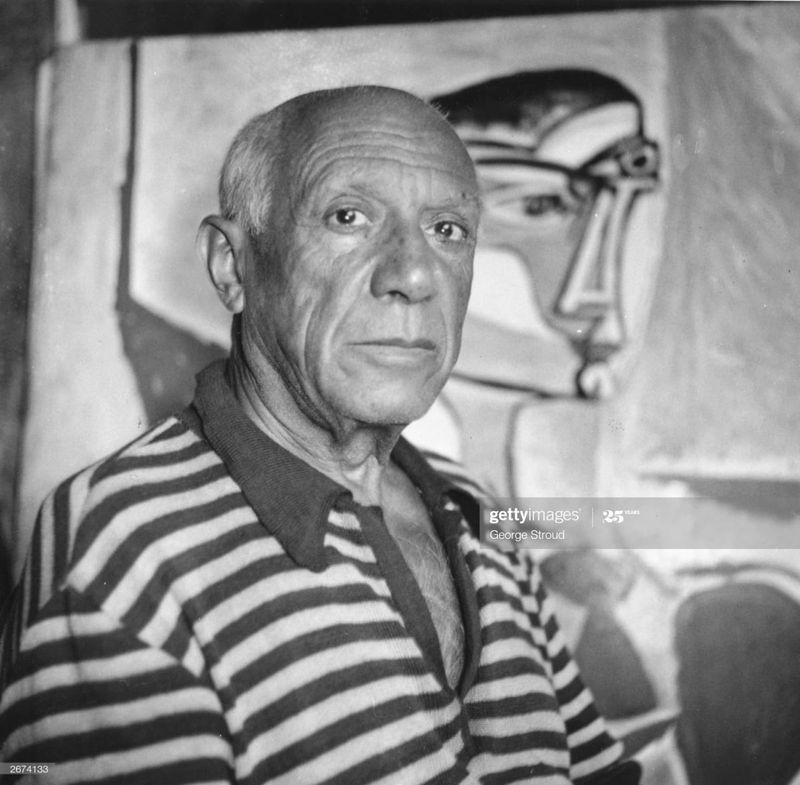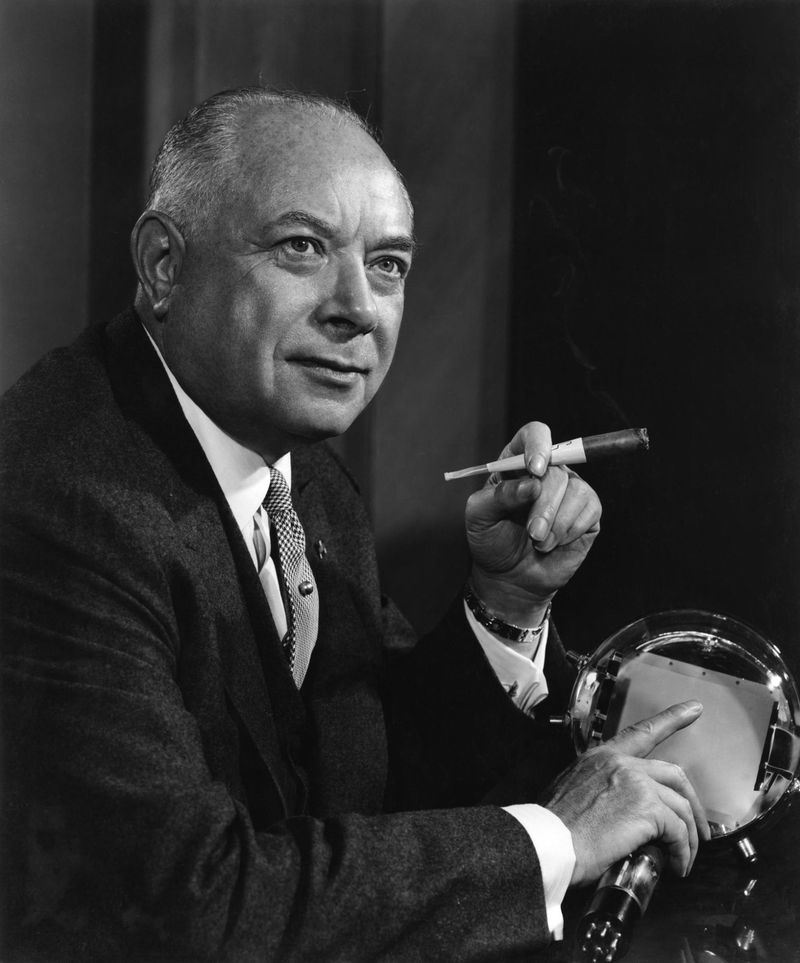The 1920s, often referred to as the Jazz Age, was a time of great social change and cultural dynamism. This decade saw the rise of iconic figures who left an indelible mark on entertainment, sports, arts, and science.
From the silent film stars who graced the silver screen to the jazz musicians who redefined music, these celebrities shaped an era that continues to influence us today.
Join us as we explore the lives and legacies of 30 remarkable individuals who became the face of the Roaring Twenties, each contributing uniquely to this vibrant period.
1. Charlie Chaplin
Charlie Chaplin, born in 1889, became a worldwide icon during the 1920s with his character “The Tramp.” His silent films, full of humor and social commentary, captivated audiences.
Chaplin’s genius lay in his ability to convey emotion without words, a skill that made him one of the most beloved figures of the silent film era. He was not just a comedian but also a director and producer, shaping the film industry profoundly.
Despite the passage of time, his films remain classics, reflecting both the humor and hardship of early 20th century life.
2. Babe Ruth
Babe Ruth, known as “The Sultan of Swat,” was a baseball legend who transformed the game in the 1920s. His incredible home run record and charismatic personality made him a household name. Ruth’s prowess on the field brought unprecedented fame to baseball, turning it into America’s beloved pastime.
Beyond his athletic achievements, Ruth was a cultural icon, representing the spirit and exuberance of the Roaring Twenties. His larger-than-life persona, combined with his exceptional talent, ensured his place in history as one of the greatest baseball players of all time.
3. Louis Armstrong
Louis Armstrong, born in 1901, rose to fame in the 1920s as a pioneering jazz musician. Known for his virtuosic trumpet playing and distinctive gravelly voice, Armstrong was a pivotal figure in jazz history.
His innovative approach to music, characterized by improvisation and emotional depth, set new standards in the genre. Armstrong’s performances were not only technically impressive but also full of charisma, making him a beloved figure both in the United States and internationally.
His influence on music extended beyond jazz, impacting various other genres and inspiring future generations of musicians.
4. F. Scott Fitzgerald
F. Scott Fitzgerald, author of “The Great Gatsby,” captured the essence of the Jazz Age through his literary works. Born in 1896, Fitzgerald became a prominent figure in the 1920s literary scene. His novels and short stories illustrated the opulence and excess of the decade, as well as its underlying disillusionment.
“The Great Gatsby,” in particular, remains a seminal work, exploring themes of wealth, love, and the American Dream. Fitzgerald’s writing style, characterized by its lyrical prose and keen social observations, continues to resonate with readers, cementing his legacy as a master storyteller.
5. Al Capone
Al Capone, known as “Scarface,” was an infamous gangster who rose to power during the Prohibition era of the 1920s. Born in 1899, Capone became the face of organized crime in Chicago, orchestrating bootlegging, smuggling, and other illegal activities.
His notoriety made him a national figure, symbolizing the darker side of the Jazz Age. Capone’s criminal empire was vast, yet his public persona was paradoxically charming, capturing the fascination of the American public.
Despite his illegal endeavors, his life story remains a compelling narrative of power, crime, and the complexities of human nature.
6. Clara Bow
Clara Bow, born in 1905, epitomized the flapper spirit of the 1920s as Hollywood’s original “It Girl.” Her vivacious presence on screen and off made her a symbol of the liberated woman of the era.
Bow starred in numerous silent films, capturing the public’s imagination with her magnetic charisma and emotional depth. Her role in the movie “It” cemented her status as a cultural icon, embodying the youthful exuberance and rebellious spirit of the Jazz Age.
Despite the challenges she faced in her personal life, Bow’s legacy as a trailblazer for women in film endures.
7. Josephine Baker
Josephine Baker, born in 1906, became an international sensation in the 1920s with her captivating performances. As a dancer and singer, Baker broke racial barriers, gaining fame in Paris for her unique style and charisma.
Her performances were an electrifying blend of dance, music, and theatrical flair, making her a beloved figure in the entertainment world. Beyond her stage presence, Baker was an advocate for civil rights, using her fame to challenge racial prejudice.
Her legacy is celebrated not only for her artistic contributions but also for her courage and dedication to social change.
8. Duke Ellington
Duke Ellington, born in 1899, emerged as one of the most influential figures in jazz during the 1920s. As a composer, pianist, and bandleader, Ellington’s contributions to music were groundbreaking.
His orchestra was known for its innovative arrangements and unique sound, which blended various musical styles. Ellington’s ability to convey complex emotions through his compositions made him a revered figure in the jazz community.
His work extended beyond performance, influencing the development of jazz as a respected art form. Ellington’s enduring legacy is a testament to his genius and passion for music.
9. Bessie Smith
Bessie Smith, often hailed as the “Empress of the Blues,” became a legendary figure in the 1920s music scene. Born in 1894, her powerful voice and emotive delivery captivated audiences and set her apart as a blues singer.
Smith’s recordings became incredibly popular, bringing blues music to a broader audience. Her songs often explored themes of love, heartbreak, and resilience, resonating with many during a time of social change.
Smith’s influence extended beyond her lifetime, inspiring future generations of musicians and solidifying her place as a pivotal figure in the history of American music.
10. Al Jolson
Al Jolson, born in 1886, was a vaudeville star who gained fame during the 1920s as the lead in “The Jazz Singer,” the first full-length “talkie” film. His energetic performances and distinctive singing style made him a popular entertainer.
Jolson’s role in “The Jazz Singer” marked a significant turning point in the film industry, transitioning from silent films to sound. Despite the controversies surrounding his use of blackface, Jolson remains an influential figure in the entertainment world.
His impact on the evolution of cinema and his contributions to musical theater are widely recognized.
11. Zelda Fitzgerald
Zelda Fitzgerald, born in 1900, was a writer and socialite who became an icon of the Jazz Age. Married to author F. Scott Fitzgerald, Zelda embodied the flapper lifestyle with her vibrant personality and rebellious spirit.
Her writings, although overshadowed by her husband’s fame, offered a unique perspective on the era’s social dynamics. Zelda’s life was marked by creativity and complexity, navigating the challenges of fame and personal struggles.
She remains an enduring symbol of the 1920s, representing both the glamour and the turmoil of the decade. Her legacy continues to inspire discussions on individuality and artistic expression.
12. Rudolph Valentino
Rudolph Valentino, born in 1895, became the quintessential silent film heartthrob during the 1920s. His exotic looks and charismatic performances made him a favorite among audiences, earning him the nickname “The Latin Lover.”
Valentino’s roles in films like “The Sheik” captivated viewers, cementing his status as a cultural icon. His sudden death at the age of 31 sent shockwaves through the film industry and his fan base, highlighting his immense popularity.
Valentino’s legacy endures as a symbol of the romantic allure of silent cinema and the enduring power of celebrity.
13. Henry Ford
Henry Ford, born in 1863, revolutionized the automobile industry in the 1920s with his innovative production methods. The introduction of the assembly line in Ford’s factories drastically reduced the cost of manufacturing, making cars affordable for the average American.
This innovation not only transformed transportation but also had a profound impact on industrial production worldwide. Ford’s vision of accessible mobility changed the landscape of American society, promoting economic growth and urban expansion.
Despite controversies surrounding his personal views, Ford’s contributions to manufacturing and society remain significant, marking him as a pivotal figure in the history of industry.
14. Greta Garbo
Greta Garbo, born in 1905, rose to fame in the 1920s as a mysterious and captivating Hollywood actress. Her enigmatic persona and striking looks set her apart from her contemporaries, making her a symbol of allure and sophistication.
Garbo’s performances in silent films and early talkies showcased her exceptional talent, earning her critical acclaim. Her ability to convey deep emotions with subtle expressions made her a standout figure in cinema.
Despite her eventual retreat from the public eye, Garbo’s legacy as a film icon endures, influencing generations of actors and filmmakers with her unique blend of talent and mystique.
15. Langston Hughes
Langston Hughes, born in 1902, became a leading figure in the Harlem Renaissance during the 1920s. As a poet, novelist, and playwright, Hughes used his work to explore African American culture and social issues, bringing the experiences and voices of black Americans to the forefront.
His poetry, characterized by its rhythmic language and poignant themes, resonated with readers, earning him widespread acclaim. Hughes’s commitment to representing the richness and diversity of African American life made him an influential figure in literature.
His legacy as a cultural trailblazer continues to inspire writers and artists today.
16. Jack Dempsey
Jack Dempsey, born in 1895, became a legendary heavyweight boxing champion during the 1920s. Known for his aggressive style and knockout power, Dempsey captivated audiences with thrilling bouts.
His rise to fame coincided with the growing popularity of sports as entertainment, making him one of the most celebrated athletes of the decade. Dempsey’s matches drew massive crowds and generated significant media attention, contributing to the commercialization of professional sports.
Beyond his boxing prowess, Dempsey’s charisma and larger-than-life personality made him a beloved figure. His legacy in the sport of boxing is remembered for its impact on athlete celebrity culture.
17. Jean Harlow
Jean Harlow, born in 1911, emerged as a Hollywood starlet in the late 1920s, captivating audiences with her beauty and charisma. Known as the “Blonde Bombshell,” Harlow’s early roles showcased her comedic timing and screen presence, setting the stage for a successful career.
Though her time in the spotlight was brief, Harlow’s impact on the film industry was significant, paving the way for future leading ladies. Her allure and talent made her a standout figure in Hollywood, and she remains a symbol of the glamour and dynamism of early American cinema.
18. Douglas Fairbanks
Douglas Fairbanks, born in 1883, was a pioneering figure in Hollywood during the 1920s, known for his swashbuckling roles in adventure films. His athleticism and charisma brought characters like Robin Hood and Zorro to life, making him a popular hero of the silver screen.
Fairbanks’s influence extended beyond acting, as he played a crucial role in shaping the early film industry, co-founding United Artists and the Academy of Motion Picture Arts and Sciences. His legacy as a trailblazer in cinema is remembered for his contributions to both the art of filmmaking and the business side of Hollywood.
19. Harry Houdini
Harry Houdini, born in 1874, was a famed magician and escape artist who captivated audiences in the 1920s with his daring performances.
Known for his incredible feats of escapism, Houdini pushed the boundaries of possibility, mesmerizing spectators with stunts that involved chains, handcuffs, and underwater tanks.
His showmanship and charisma made him a beloved figure in the entertainment world. Beyond his stage acts, Houdini was also a skeptic who challenged fraudulent spiritualists, adding a dimension of intrigue to his public persona.
His legacy as a master illusionist continues to inspire magicians and entertainers worldwide.
20. Coco Chanel
Coco Chanel, born in 1883, revolutionized women’s fashion in the 1920s with her innovative designs and timeless style. Her creations, characterized by simplicity and elegance, challenged the fashion norms of the time.
Chanel introduced garments like the Chanel suit and the little black dress, which became staples in women’s wardrobes. Her influence extended beyond fashion, as she embodied the modern, independent woman of the Jazz Age.
Chanel’s legacy endures in the fashion industry, with her brand remaining synonymous with luxury and sophistication. Her impact on style and society continues to inspire designers and fashion enthusiasts.
21. Ernest Hemingway
Ernest Hemingway, born in 1899, emerged as a major literary figure in the 1920s with his distinct writing style. Known for his terse prose and vivid storytelling, Hemingway captured the complexities of life and human emotion.
His works, such as “A Farewell to Arms” and “The Sun Also Rises,” explored themes of war, love, and existentialism, earning him critical acclaim. Hemingway’s adventurous lifestyle, marked by travel and outdoor pursuits, influenced his writing, adding authenticity and depth.
His contributions to literature have left a lasting impact, with his works continuing to be studied and celebrated worldwide.
22. W.C. Fields
W.C. Fields, born in 1880, was a comedian and actor who made a name for himself in the 1920s with his unique brand of humor. Known for his witty one-liners and comedic timing, Fields entertained audiences both on stage and in film.
His characters, often portraying a lovable curmudgeon, resonated with viewers, securing his place as a beloved entertainer. Fields’s influence extended beyond comedy, as he also wrote and directed many of his performances, showcasing his versatility.
His legacy as a pioneer in comedic entertainment endures, inspiring generations of comedians and actors with his distinctive style.
23. Mae West
Mae West, born in 1893, was a vaudeville star known for her bold personality and witty performances in the 1920s. Her provocative humor and confident demeanor challenged societal norms, making her a trailblazer for women in entertainment.
West’s plays and films often explored themes of female empowerment and sexuality, resonating with audiences and critics alike. Her ability to captivate and provoke thought made her a standout figure in the entertainment industry.
West’s impact on popular culture is remembered for its contributions to the evolution of female roles in media and her fearless approach to self-expression.
24. Gloria Swanson
Gloria Swanson, born in 1899, was a prominent silent film actress who became a symbol of Hollywood glamour in the 1920s. Known for her dramatic roles and striking presence, Swanson captivated audiences with her performances.
Her talent and dedication to her craft earned her critical acclaim and made her one of the highest-paid actresses of her time. Swanson’s ability to adapt to the transition from silent films to talkies showcased her versatility and resilience.
Her enduring legacy in the film industry is celebrated for her contributions to the art of acting and her influence on future generations of performers.
25. Albert Einstein
Albert Einstein, born in 1879, became a cultural figure in the 1920s, known for his groundbreaking work in theoretical physics. His theory of relativity revolutionized the scientific community, challenging existing concepts of time and space.
Einstein’s intellectual contributions extended beyond science, as he became an advocate for peace and humanitarianism. His unique persona and iconic image, characterized by his wild hair and thoughtful expression, captured the public’s imagination.
Einstein’s influence on both science and society remains profound, with his theories continuing to shape modern physics and his advocacy inspiring generations to pursue knowledge and social justice.
26. Walter Winchell
Walter Winchell, born in 1897, rose to fame in the 1920s as a pioneering gossip columnist and broadcaster. His columns, filled with witty commentary and insider information, captivated readers, making him a household name.
Winchell’s style, characterized by its fast pace and sensationalism, set new standards for entertainment journalism. His influence extended beyond print, impacting the development of radio broadcasting with his dynamic on-air presence.
Despite the controversies surrounding his career, Winchell’s impact on media is undeniable, remembered for both his contributions to journalism and his role in shaping celebrity culture.
27. Man Ray
Man Ray, born in 1890, emerged as a leading figure in the Dada and Surrealist movements during the 1920s. Known for his innovative approach to photography and art, Man Ray pushed the boundaries of creative expression, experimenting with techniques like solarization and photograms.
His work captured the imagination of the avant-garde community, making him a celebrated artist in both Europe and America. Beyond photography, Man Ray’s contributions to painting and film further cemented his reputation as a versatile and influential artist.
His legacy in the art world is marked by his commitment to challenging conventions and inspiring new forms of creativity.
28. Howard Carter
Howard Carter, born in 1874, gained worldwide fame in the 1920s as the archaeologist who discovered the tomb of Tutankhamun. His discovery in 1922 was one of the most significant archaeological finds in history, revealing a wealth of artifacts and offering new insights into ancient Egyptian civilization.
Carter’s meticulous excavation and documentation of the tomb captivated the public and fueled a global fascination with Egyptology. Despite the challenges he faced in the field, Carter’s dedication to his work laid the foundation for future archaeological research.
His legacy is celebrated for its contributions to our understanding of the ancient world.
29. Pablo Picasso
Pablo Picasso, born in 1881, was a revolutionary artist who played a pivotal role in modern art during the 1920s. Known for co-founding the Cubist movement, Picasso’s work challenged traditional perspectives, introducing new ways of seeing and interpreting the world.
His bold experimentation with form and color influenced countless artists and art movements. Beyond painting, Picasso’s talents extended to sculpture, printmaking, and ceramics, showcasing his versatility.
His impact on the art world is profound, with his works continuing to be celebrated for their innovation and expressive power. Picasso’s legacy remains a testament to his genius and enduring influence.
30. David Sarnoff
David Sarnoff, born in 1891, was a pioneering figure in the development of radio and television broadcasting during the 1920s. As an executive at RCA, Sarnoff played a crucial role in shaping the future of mass communication.
His vision for radio as a source of entertainment and information transformed the medium, making it an integral part of everyday life. Sarnoff’s leadership extended to the early development of television, positioning him as a key player in the broadcast industry’s evolution.
His legacy is marked by his contributions to technological innovation and his impact on the media landscape.
